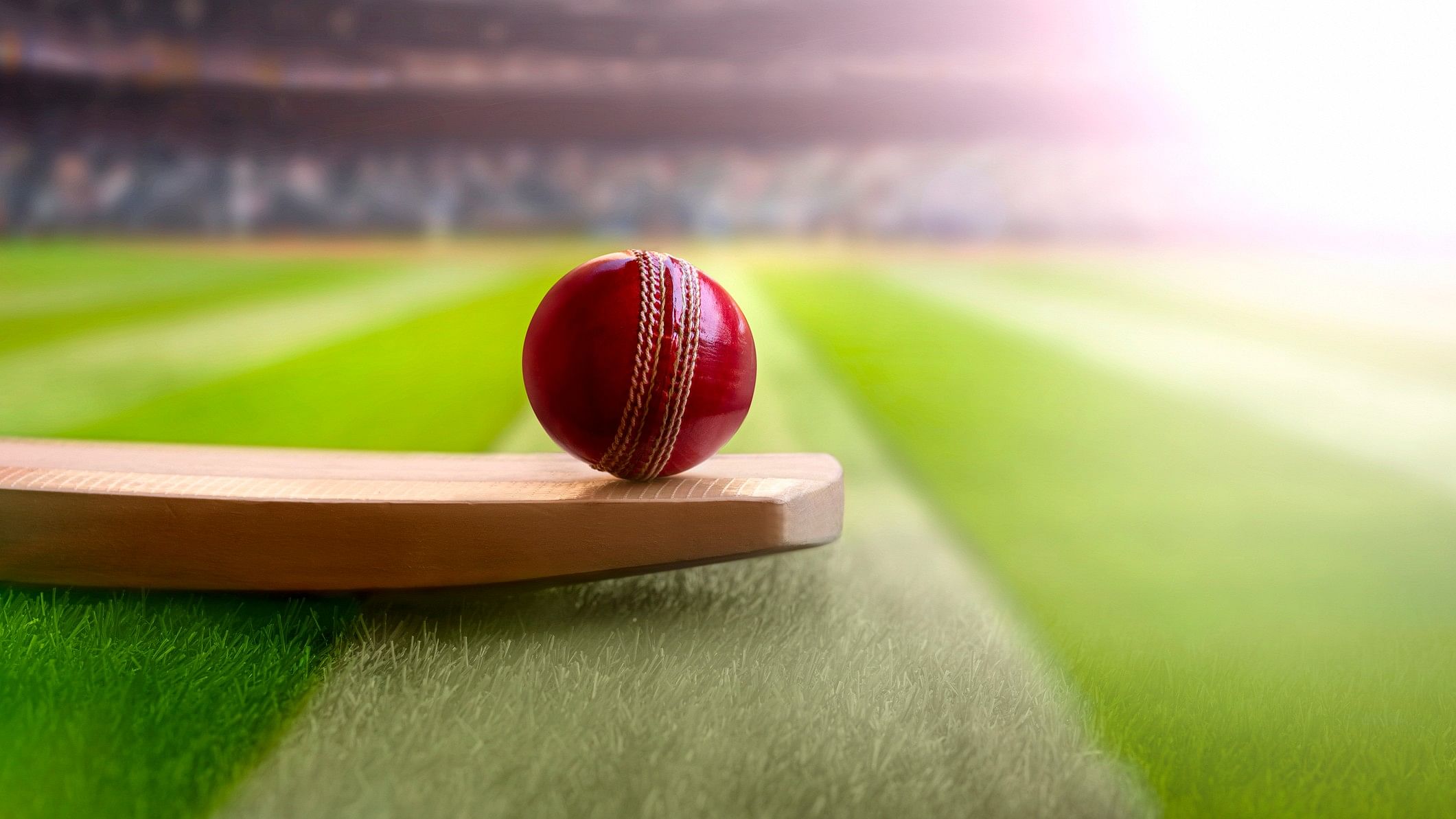
Representative image showing a cricket bat and ball.
Credit: iStock Photo
Until the mid-1960s, Bangalore had not hosted a Test cricket match. The matches held were first-class encounters featuring visiting foreign teams against either Indian universities or South Zone teams. England, with its condescending view of the Indian cricket team, consistently dispatched secondary players and labelled them as the MCC team.
These first-class matches were initially played at South Parade grounds, situated opposite the Deccan Herald office on present-day MG Road. In 1948, the famous SJOC team, comprised of cricketers from various countries, graced this venue, including West Indian legends known as the “three W’s”: Weeks, Walcott, and Worrell.
Subsequently, the venue shifted to the Central College grounds. These matches spanned three days, with ticket prices set at Rs 5 per day for the pavilion, Rs 1 and 4 Annas per day for the gallery, and 8 Annas for a three-day season ticket.
The ground was rudimentary, with a sparsely grown lawn. Daily tickets were preferred because most matches concluded on the second day or before lunch on the third day. Many of us, school students living in the vicinity of Shankarpuram, would walk about 6 km to watch these matches. Among those who purchased the 8 Annas tickets, several later achieved fame as cricketers, IAS and IPS officers, scientists, and Padma Awardees.
Many of my classmates went on to become accomplished Ranji players, and a few represented India as test players, bringing accolades to the country. My elder brother’s teammate became a highly popular Test cricketer as a batsman. Three of my classmates gained recognition as prominent Ranji Trophy players, all known for their batting prowess. One of them had the distinction of representing both Mysore and Madras as an opening batsman.
In our school days from the late 1940s to the mid-1950s, we played cricket with battered old bats, tattered gloves, and cricket balls that had seen better days, painstakingly sewn back together by a cobbler. Each team had only two leg pads for protection, leading to batsmen wearing just one. When a player was declared out, the next batsman would inherit the pad, tying it on to face the ball. Occasionally, disputes would arise when the new player walking in and his team-mate, who was walking out would engage in a verbal exchange. The dismissed batsman would sometimes jest, “Were you praying for me to get out so you could get a chance to bat? That is why I got out.”
We also had grand names for our teams, like “The Unbeatables” and “Conquerors.” Once, we called our team the “Mercury Cricket Club” because mercury doesn’t adhere to anything and flows freely. A team from East Anjeneya Temple Road chose to call themselves the “Ozone Cricket Club,” alluding to how ozone breaks down the properties of mercury.
After matches, the two teams often engaged in spirited banter, occasionally resorting to taunts. But the one most teased by the losing team was the umpire labelled as a “kadlekai umpire” (useless umpire). However, the very next day, things would be normal, and friendships prevailed.